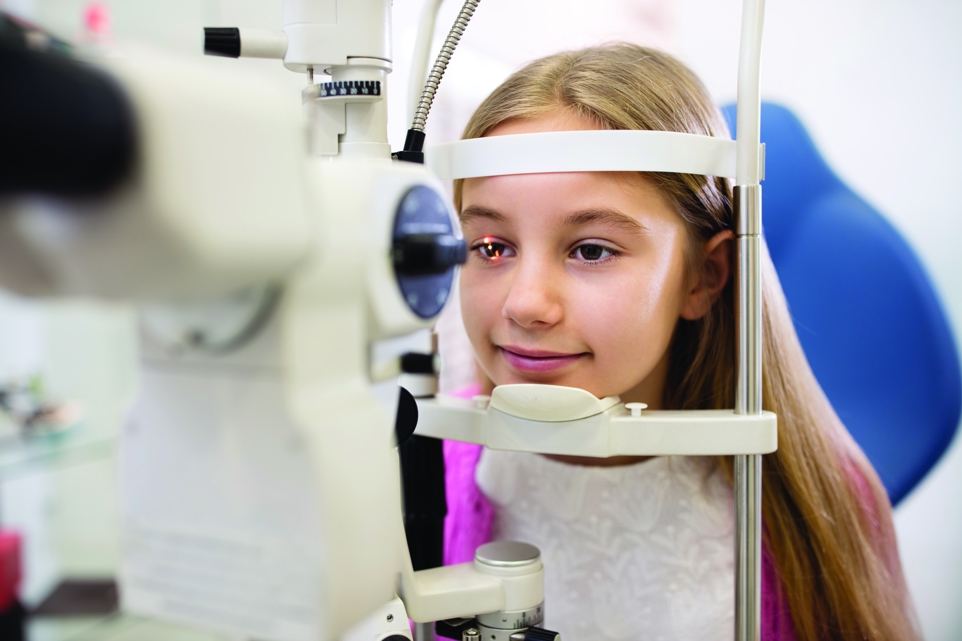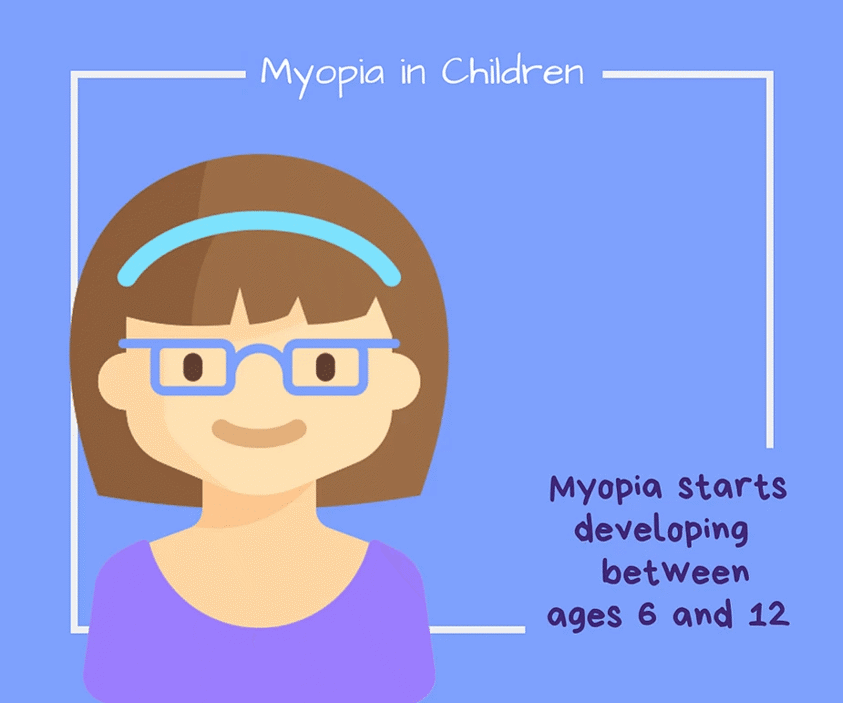
What is Myopia and How Does it Affect Kids?
Myopia, also called short-sightedness or near-sightedness, is an eye condition which makes it difficult to see far-away objects. It’s one of several refractive errors that cause vision problems because of the way the eye focuses light onto the retina.
Myopia usually begins in childhood and progresses over time causing reduced vision. The condition is extremely common, and its prevalence has been growing in the last decades. Some researchers think that by 2050 as much as half of the world’s population will be myopic (Holden et al, 2016).
The condition can cause problems with development and learning, so managing its effects in children and slowing its progression is the main aim of treatment.
As parents and caregivers, common conditions like myopia are concerning. However, increasingly there are more effective and various ways of managing the condition that can ensure your child isn’t hindered in their development.
In this guide, we’ll give you helpful information about myopia alongside tips and advice to help you spot its warning signs, make the right treatment decisions and keep your child’s eyes as healthy as possible.
Myopia Explained

The first step in dealing with myopia as a parent is understanding how it works. This will give you insights that can help you identify the condition and decide on treatment options but can also make the conditions seem less scary.
Myopia is a refractive error, alongside conditions like astigmatism and presbyopia. This means that because of the way the eye is shaped, light does not hit the retina correctly leading to different kinds of visual impairment. In the case of myopia, the eye is sloping or elongated with a curved cornea (the outer layer of the eye). This causes the light to refract differently so that it falls in front of the retina instead of directly on it.
Myopia is a progressive eye condition, which means it causes vision to deteriorate over time. It usually appears in childhood (usually between the ages of 6 and 12) and worsens for several years until it stabilises in the early 20’s. One part of myopia management is limiting or stopping this progression, while the other focuses on correcting the shortsighted vision.
Identifying Myopia Symptoms in Children: A Parent's Guide
Myopia makes it difficult to see distant objects clearly while near vision is still clear – but how to spot this in your child?
Children will often not tell you about problems with their vision. Here are the most common signs of myopia for you to look out for:
- Squinting is an attempt to help focusing using the muscles around the eyes. For myopic children, this may be one of the ways they compensate for reduced vision.
- You may notice signs of reduced vision like sitting too close to TV screens or complaining of being unable to see the whiteboard or projector at school.
- When children struggle to focus their eyes, this can lead to eye strain. This has a variety of symptoms including headaches, eye rubbing and difficulty concentrating.
- Difficulty at school can have many causes but myopia is one of them. For children dealing with an undiagnosed eye condition, some tasks may be frustrating and side effects like eye strain can cause further difficulties.
Why Early Intervention Matters: Risks of Ignoring Myopia
While myopia is a minor condition compared to many others, it can still have far-reaching effects in a child’s life. Not only does myopia affect visual learning and development, but in severe cases it creates a greater risk of developing other eye conditions later in life.
Because it is not fully understood and thought to be an unimportant condition, some parents do not give myopia much attention. It is important to remember that myopia tends to get worse over time, so early diagnosis is vital to limiting vision loss. Not only that, but children with myopia often experience visual discomfort, eye strain and headaches all of which can lead to academic difficulties.
Having your child’s eyes tested regularly and not ignoring the signs and symptoms of myopia are important steps towards safeguarding their health and vision.
Navigating Treatment Options for Kids with Myopia
Myopia treatment and management may mean eye drops, contact lenses, glasses or even surgery. Your optometrist will help you decide the right treatment option for your child, but understanding the different options can help you navigate the decision effectively.
Contact lenses are one of the most common myopia management options. These lenses are designed precisely to provide vision correction and control the shape of the cornea, to limit the progression of myopia over time.
There are different types including soft lens options, Rigid Gas Permeable lenses and Orthokeratology lenses (Ortho K). Each of these lens types has options that can correct myopic vision while also slowing down its progression. Ortho K uses an interesting approach in which lenses are worn overnight to correct vision during the day.
Glasses are more often used for mild myopia. They can be just as effective as contact lenses in correcting vision and slowing down myopia progression. They do this by refocusing light onto the retina using a specialised lens. They are a simple and convenient choice, especially for children who may not like wearing contacts. However, they are less effective at treating advanced cases of the condition.
Surgery may be recommended in more severe cases of myopia and can provide a permanent solution in some instances. While all surgeries come with risks and possible side effects, myopia surgery is generally considered to be safe and effective. Laser-assisted in-situ keratomileusis (LASIK) and Photorefractive keratectomy (PRK) are the main surgical options. They work slightly differently, but both are aimed at reshaping the cornea to improve the way it refracts light onto the retina.
Atropine eye drops are sometimes also used for several years. There are different dosages available and while a higher dose may be more effective, it comes with a greater likelihood of experiencing side effects.
Choosing the right treatment options can take time and consideration. We encourage you to use available resources and the support of your local optician to make the decision.
Empowering Parents: Tips to Safeguard Your Child's Vision
Today, children’s lifestyles and workloads make them prone to a variety of eye conditions. As parents, staying informed is crucial to supporting their eye health enabling them to learn and grow without the difficulties of untreated vision loss.
Kids’s eye care is a big topic, but here are some ways you can look after your child’s eyes:
- Encouraging a balanced diet that includes foods rich in essential vitamins (particularly A, C, E, and Omega Fatty Acids), such as green leafy vegetables, citrus fruits, carrots, and fish, can support healthy eyes and good vision.
- Regular exercise is beneficial to general and eye health. The blood vessels in the eyes are prone to a variety of conditions and regular exercise helps to keep them healthy and less susceptible to damage or disease. Many eye conditions are caused by general health issues, so instilling healthy exercise habits early can reduce the risk of such conditions.
- Spending time outdoors is also thought to improve eye health. School work, screen time and low light are all culprits of vision and eye health issues while spending time outdoors regularly is believed to minimise the risk of conditions like myopia.
- Regular eye examinations are vital for early detection of eye conditions and vision loss. Like myopia, many conditions are better treated and managed when caught early. These exams ensure that any issues are quickly identified and addressed.
These are some of the general areas that should be looked at in children’s eye care. Of course, every child is different and has particular requirements, so finding the best ways to look after their eyes is up to you and their optometrist.
Fostering a Myopia-Conscious Community
With the increasing prevalence of myopia in children, we hope to help connect parents and caregivers with local optometrists to help them provide the best care for their kids. Through our articles, social media pages and independent optician resources, our aim is to create an awareness and understanding of the condition that’s accessible to everyone.
We invite you to join our online community so you can enjoy support and connection in your journey with kids' eye care.





